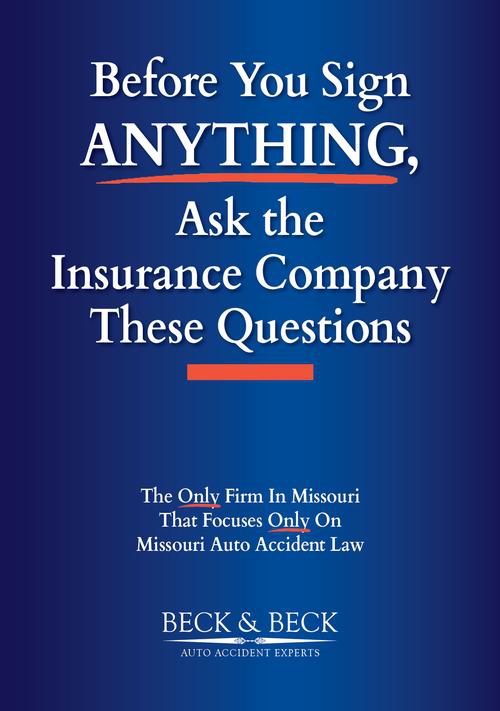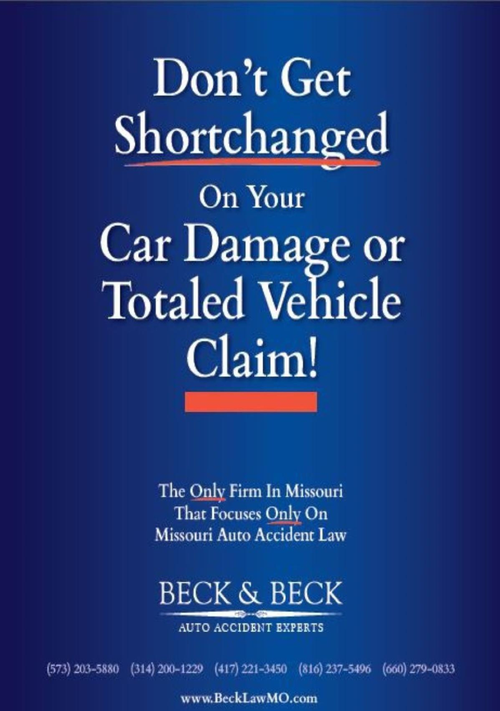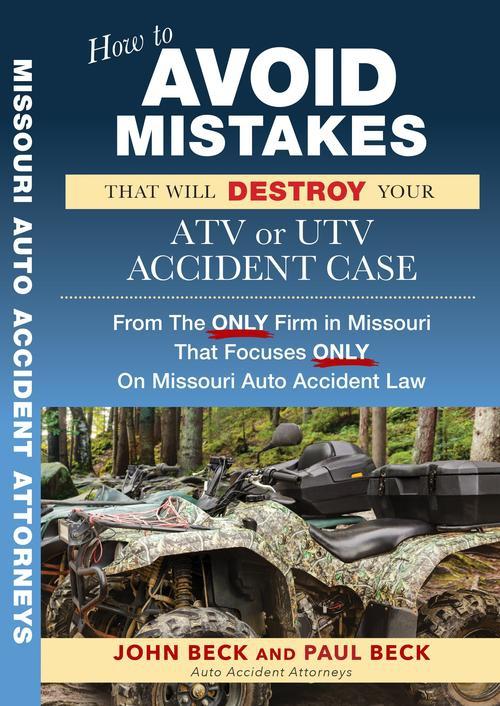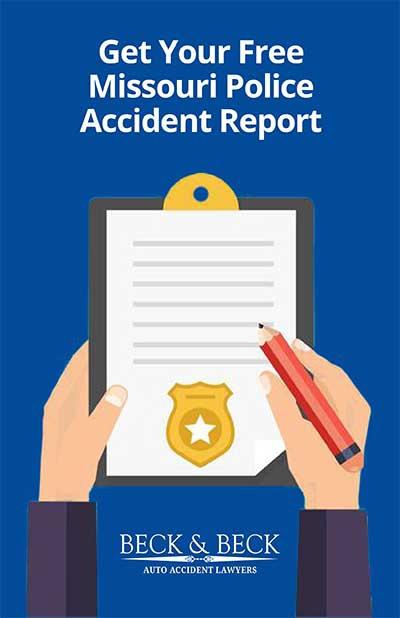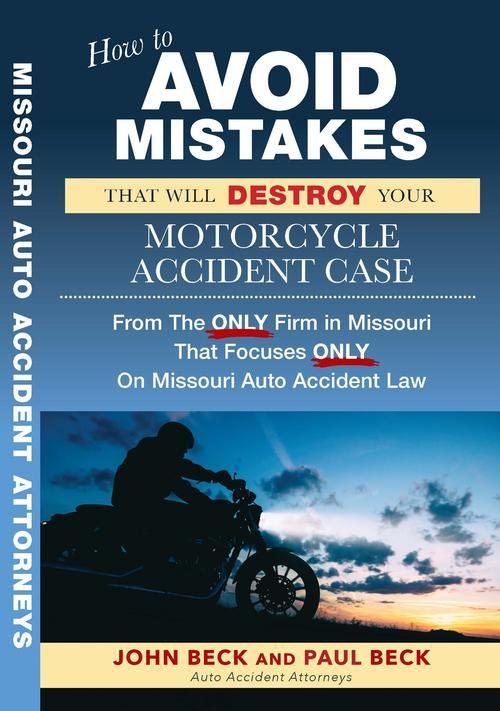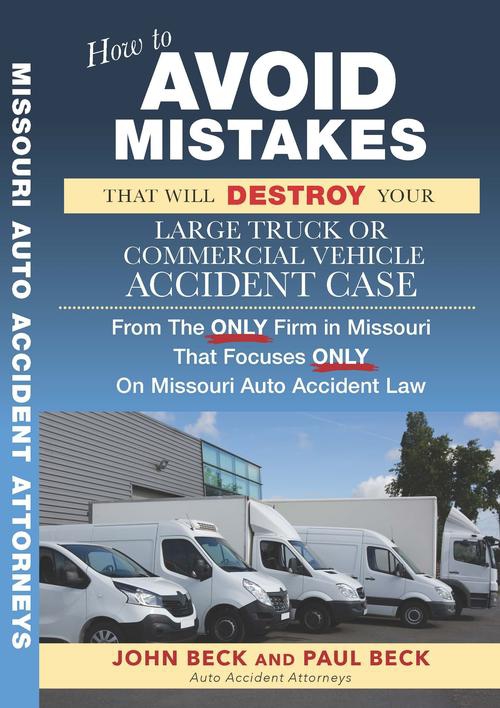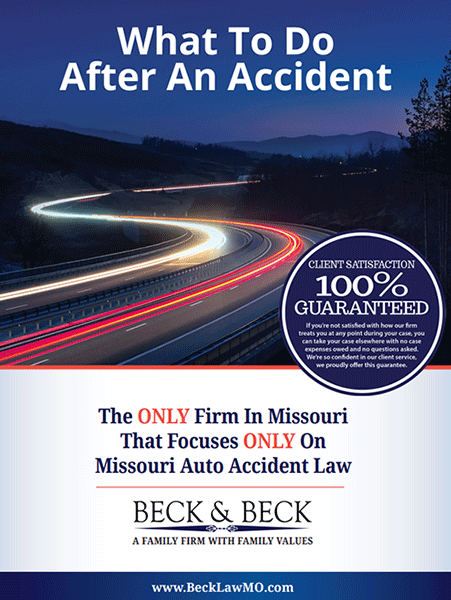Missouri follows a pure comparative negligence system, which means you can recover compensation for your injuries even if you were partially at fault for the car accident.
Under this law, your compensation is reduced by your percentage of fault, but you’re never completely barred from recovery regardless of how much blame you share.
RSMo Section 537.765 protects accident victims by ensuring that everyone pays their fair share of responsibility.
- 20% at fault: You recover 80% of your total damages.
- If you are 40% at fault, you may recover 60% of your total damages.
- 60% at fault: You recover 40% of your total damages
- 80% at fault: You recover 20% of your total damages
You might still be able to get 1% of your damages from the other driver, even if you’re 99% at fault.This formula is used by insurance companies and juries in every case.
It’s easy to do the math, but the real battle is proving your exact percentage of fault.
How Comparative Fault Impacts Car Accident Claims
Comparative fault is a critical factor in almost every car accident case and directly affects the final settlement amount. Insurance adjusters will use this legal rule to justify lower settlement offers.
They may assign you a high percentage of fault to significantly reduce their payout, costing you thousands of dollars. Insurance agents are good at getting statements that can be twisted to make you seem more at fault, even when your words are taken entirely out of context.
This is why it is essential to have an experienced Missouri auto accident attorney who can challenge an unfair fault determination and ensure you receive the full compensation you deserve.
How Fault Is Assigned in Missouri
Fault determination starts with the police report but goes much deeper. Insurance companies conduct their own investigations, and if your case goes to court, a jury makes the final decision.
The process involves reviewing all available evidence to gain a clear understanding of exactly what happened. Investigators look at the police officer’s findings, witness statements, and physical evidence from the scene.
You’re not stuck with an insurance company’s fault determination. If they assign you unfair blame, you can challenge their decision with additional evidence or expert testimony.
Negligent Actions That Can Affect the Percentage of Fault Awarded
- Drunk or drugged driving
- Distracted driving
- Driving with excessive speed
- Reckless driving
- Drowsy or fatigued driving
- Driving with motor vehicle defects
- Poor driving in adverse weather conditions
Examples of Comparative Fault in Missouri Car Accident Claims
Real accident scenarios show how fault is divided in Missouri. These examples help you understand what to expect if you are involved in a similar crash under the state’s pure comparative fault system.
Rear-End Collisions
In most cases, the driver who rear-ends another vehicle is considered primarily at fault for the accident. The law requires drivers to maintain a safe following distance to avoid a collision. However, the circumstances of each accident can affect how fault is assigned.
For example, if the leading driver stopped suddenly without a valid reason or had non-working brake lights, they could be found partially at fault for the crash.
Left-Turn Accidents
Drivers making a left turn typically bear most of the responsibility because they are required to yield to oncoming traffic. The turning driver must ensure the intersection is clear before proceeding.
However, if the other driver was speeding excessively or ran a red light, a portion of the fault may be assigned to them as well, reducing the turning driver’s percentage of blame.
Intersection Collisions
Collisions at intersections can be particularly complex, especially when both drivers claim they had the green light and there is no clear evidence to prove otherwise. These situations often result in T-bone accidents.
In such cases, the final determination of fault may heavily rely on external evidence, such as traffic camera footage, reliable witness statements, or a thorough accident reconstruction.
Lane Change Accidents
The driver changing lanes is usually considered at fault for a collision with a vehicle already in that lane.
However, if you were speeding or driving in the other driver’s blind spot without allowing them a reasonable chance to see you, you could be found partially responsible as well.
Joint and Several Liability in Missouri
The 51 Percent Threshold
Missouri’s joint and several liability rule protects you when multiple parties cause your accident. If one defendant is 51% or more at fault, they can be held responsible for your entire judgment.
This rule ensures you can collect full compensation even when other at-fault parties can’t pay. It’s essential in crashes involving uninsured drivers or defendants without enough assets.
Here’s how it works: In a three-car accident where Driver A is 60% at fault, Driver B is 30% at fault, and you’re 10% at fault, Driver A could owe you 90% of your total damages. You don’t have to chase Driver B for their smaller share.
Key Exceptions
Two situations don’t follow the 51% rule. The first involves employees who cause accidents while on the job. The second covers railroad workers under the
In these cases, different liability rules apply. Each defendant only pays their proportional share of damages, even if they’re more than 51% at fault.
Evidence That Proves Fault
Building a strong car accident claim in Missouri requires collecting specific types of evidence that clearly establish fault. Our experienced Missouri car accident attorneys focus on securing these critical pieces of evidence to maximize your compensation:
Accident Scene Documentation
Comprehensive images and video of the accident scene can tell the story of what happened. Take wide-angle shots and close-ups of vehicle positions, damage patterns, skid marks, road conditions, and traffic signs.
Similarly, video evidence from dashcams, traffic cameras, or security footage from nearby businesses provides a decisive, unbiased record of the crash.
Witness Statements and Official Reports
Independent, third-party accounts carry significant weight with insurance adjusters and juries. Collecting contact information from all witnesses at the scene is vital.
This is paired with the official police report, which contains the responding officer’s observations, statements from involved parties, and preliminary fault determinations.
Technical and Medical Data
Modern vehicles contain “black boxes,” or electronic data recorders, that capture critical information in the seconds leading up to impact. This technical evidence, including data on speed, braking patterns, and steering inputs, can definitively prove what each driver did.
Medical records are equally important, as they provide official documentation of your injuries, the treatment timeline, and a clear link between the crash and your physical harm.
Expert Testimony
In complex cases, expert testimony can provide professional analysis to support your claim.
Accident reconstruction specialists, medical experts, and engineers can explain the complicated dynamics of the crash and the full extent of your injuries, providing compelling support for your version of events.
Assisting Victims of Motor Vehicle Accidents Since 1990
Missouri’s comparative negligence laws can work for you or against you, depending on how well your case is presented. While insurance companies have teams of lawyers dedicated to minimizing your payout, you deserve fierce advocates on your side.
At Beck & Beck Missouri Car Accident Lawyers, we are dedicated to fighting for people who have been injured in accidents throughout Missouri.
Since 1990, we’ve helped countless clients secure the compensation they deserve. We are the only law firm in Missouri that focuses exclusively on auto accident cases, giving us unparalleled insight into the tactics insurance companies use to deny claims.
We handle every case personally and never charge fees unless we win your case. Cities in Missouri where we’ve helped car crash victims include Saint Louis, Independence, Jefferson City, Springfield, O’Fallon, and more.
Related Articles
Is Missouri an at-fault state for car accidents?
What do I do if the insurance company denies my car accident claim?

